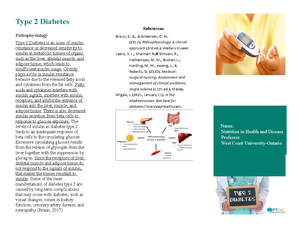- Information
- AI Chat
Was this document helpful?
WEEK 2 NURS 211L - Nursing Process Worksheet
Course: Nutrition (N225)
296 Documents
Students shared 296 documents in this course
University: West Coast University
Was this document helpful?

Course: NURS 211L
NURSING PROCESS WORKSHEET
Date: November 10,2020
Student Name: Caroline Howe
Faculty Name: Professor Christine Corcoran
Instructions:
Each clinical day each student will develop a nursing process outline for one patient of their choice. These are
quick writes and should be done throughout the shift and not taken home. These will be discussed in post
conferences with the faculty. The outline will be as follows:
Arthur Thomason 56 year old MVA victim, fourth day post op with a splenectomy.
Assessment (Based on systems: cardio, resp, GI/GU, mobility, Neuro, Safety, skin, pain, psychosocial)
Obj: Neuro: patient gets confused but can be reoriented to place. He is A/Ox 3. His vital signs are RR:30 bpm, HR
100 bpm, BP:146/94, Temp: 102.4 temporal, O2 Sat: 98% with 2L nasal cannula. Resp: coughing, ineffective in
clearing secretions. Bilaterally heard crackles in the lungs. His breathing is labored, and chest x-ray showed
bilateral interstitial infiltrates in all lobes. Falling PaO2 and rising CO2. His skin is cool and dry.
Subj: Mr. Thomason reports feeling anxious and sob. He says he feels generally worse all over since yesterday.
Nursing Diagnosis (2) Must be prioritized. Must be Nanda using three part statement (Based on systems: cardio,
resp, GI/GU, mobility, Neuro, Safety, skin, pain, psychosocial)
Stem (DX): Etiology (Cause): as evidenced by (Signs and symptoms) Abnormal Assessment Findings.
(1) Impaired gas exchange related to bilateral interstitial infiltrates in all lobes as evidence by crackled
auscultated in all lobes, and falling PaO2 and rising CO2 levels.
(2) Ineffective airway clearance related to increased sputum production as evidence by nonproductive cough.
Planning (Patient goals) Must be SMART goals
Pt. will (verbalize, demonstrate, be able to, increase & maintain, or decrease & maintain) by the: (end of shift,
end of day, discharge day) or within: (two hours; 12 hours, etc.)
Patient will participate in actions to maximize oxygenation by the end of teaching.
Patient will display effective airway clearance after RT and I teach him how to mobilize secretions.
Implementation (Specific nursing interventions that were performed during your shift): Must contain the
following: Assess {observe, palpate, percuss}; Monitor; Administer; Collaborate w/ specific multi-disciplinary
team; & Teach
We will raise the head of Arthurs bed and keep the O2 cannula on him. We will titrate as needed. We will
demonstrate to Arthur how to take deep breaths to maximize oxygenation, and have him teach back to us. We
will call for an RT consult, to help mobilize secretions, and show Arthur how to effectively clear his airway. We
will maintain adequate hydration so those secretions can move easier and be cleared more readily.
Evaluation (What was the outcome: Goal; Met or Not met or Partially met and How to revise.)
Both goals were met. Arthur was able to demonstrate how to maximize his oxygenation through changing
positions, keeping his head and thorax elevated, and his breath pattern. We were able to also clear some
secretions with the help of RT, and clear his airway a bit better. He verbalized feeling much better after doing so.
Nursing Application Assessment
Include activities throughout the day performed in relation to the following NCLEX content categories. See
content category examples below as cited by NCSBN
Management of Care
We made sure to keep a close eye on Arthur Thomason, and assist him in his respiratory problems. We got
him an incentive spirometer, so he can really expand and stretch his lungs, for optimal oxygenation. We also
Page 1 of 2










